Lifespan Batteries

What is the lifespan of a lithium battery ?
The lifespan of a lithium battery is affected by various factors such as the type of battery, usage patterns, and environmental conditions. In general, most lithium batteries have a lifespan of 2-3 years or 300-500 charge cycles, whichever comes first. However, this can vary significantly based on the specific application and usage patterns. Different types of lithium batteries have different lifespans. For example, Lithium-ion batteries typically have a longer lifespan than Lithium-polymer batteries. Additionally, some newer types of lithium batteries, such as solid-state batteries, may have even longer lifespans than traditional lithium-ion batteries. How you use your lithium battery can also affect its lifespan. For example, if you frequently charge your battery to 100% and then discharge it completely, this can shorten its lifespan compared to if you only charged it to 80% and discharged it to 20%. Similarly, if you frequently expose your battery to high temperatures or cold temperatures, this can also shorten its lifespan. Finally, the environmental conditions in which your lithium battery is stored and used can also affect its lifespan. For example, if you store your battery in a hot or humid environment, this can shorten its lifespan compared to if you store it in a cool, dry environment. Similarly, if you frequently expose your battery to extreme temperatures or humidity levels while using it, this can also shorten its lifespan. To maximize the lifespan of your lithium battery, there are several things you can do: * Avoid exposing your battery to extreme temperatures or humidity levels. * Try to keep your battery's charge level between 20% and 80% as much as possible. * Use a high-quality charger that is designed specifically for your type of lithium battery. * If possible, try to use your device's built-in power management features to help regulate charging and discharging patterns.

Are there any alternatives to lead-acid batteries for energy storage ?
Lead-acid batteries have been a popular choice for energy storage due to their cost-effectiveness and reliability. However, there are several alternatives available that offer different benefits depending on the specific application. Some of the most common alternatives include lithium-ion batteries, nickel-cadmium batteries, sodium-sulfur batteries, and flow batteries. Each of these options has its advantages and disadvantages, such as higher energy density, longer lifespan, faster charging capabilities, and potential safety risks. By considering factors such as energy density, lifespan, maintenance requirements, and environmental impact, you can choose the best option for your energy storage needs.
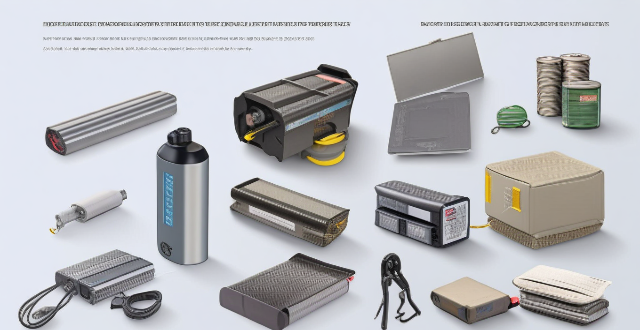
How long does a lead-acid battery last ?
Lead-acid batteries are commonly used in various applications, including vehicles, uninterruptible power supplies (UPS), and renewable energy storage systems. The lifespan of a lead-acid battery depends on several factors, such as its type, usage, and maintenance. In this article, we will discuss the typical lifespan of lead-acid batteries and provide tips for extending their service life.

How do lithium batteries compare to other types of batteries ?
The text compares lithium batteries (Li-ion and LiPo) with other types of batteries in terms of energy density, charge retention, lifespan, charging speed, safety, cost, and environmental impact. Lithium batteries are found to have high energy density, low self-discharge rates, a longer cycle life, and can be charged quickly. However, they are more expensive upfront and pose specific safety risks. Other batteries may be initially cheaper but require more frequent replacements and have different safety concerns. Overall, the advantages of lithium batteries often outweigh their drawbacks, making them the preferred choice for modern portable electronics and large-scale applications.

Can zinc-carbon batteries be recharged ?
Zinc-carbon batteries, commonly used in devices like flashlights and radios, are not designed to be recharged due to their chemical composition and physical structure. Attempting to recharge them can lead to safety risks and efficiency issues. Alternatives like nickel-metal hydride and lithium-ion batteries offer better performance and environmental benefits.
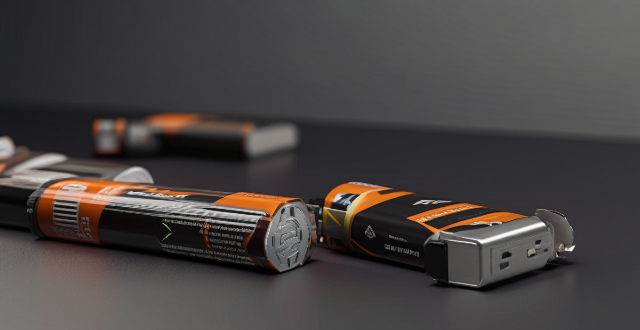
How long do zinc-carbon batteries last ?
Zinc-carbon batteries are a type of primary battery that has been widely used since the late 19th century. They are known for their reliability, low cost, and ability to provide a steady voltage output over time. However, like all batteries, zinc-carbon batteries have a finite lifespan, which depends on several factors such as battery quality, device requirements, discharge rate, and environmental conditions. To maximize their longevity, it is recommended to store them properly, use high-quality batteries, rotate batteries in devices that require multiple batteries, and avoid draining them completely.
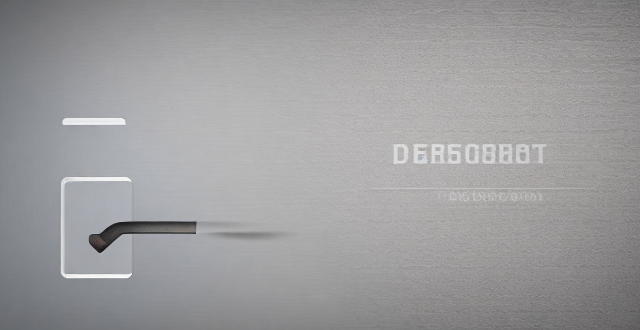
What are the main types of power batteries used in electric vehicles ?
The text discusses the main types of power batteries used in electric vehicles (EVs), including lead-acid, nickel-cadmium (NiCd), nickel-metal hydride (NiMH), lithium-ion (Li-ion), and lithium-iron phosphate (LiFePO₄) batteries. Each type has its own advantages and disadvantages, such as cost, lifespan, energy density, self-discharge rate, safety concerns, and environmental impact. The choice of battery type depends on the specific requirements and priorities of the vehicle manufacturer and end-user.
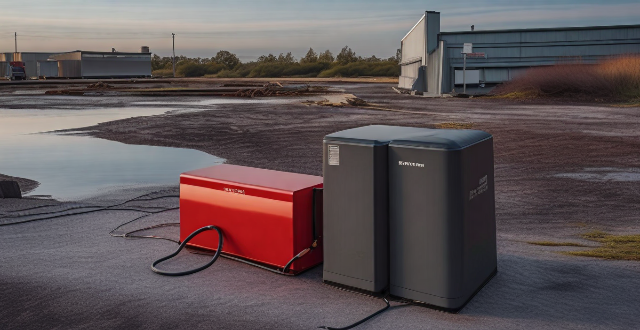
What are the advantages and disadvantages of using lithium iron phosphate batteries as power batteries ?
Lithium iron phosphate batteries are a popular choice for power batteries due to their longer lifespan, higher safety, environmental friendliness, and lower cost compared to other types of lithium-ion batteries. However, they also have some disadvantages such as lower energy density, slower charging speed, temperature sensitivity, and limited availability. Despite these drawbacks, lithium iron phosphate batteries remain a reliable and efficient option for many applications.
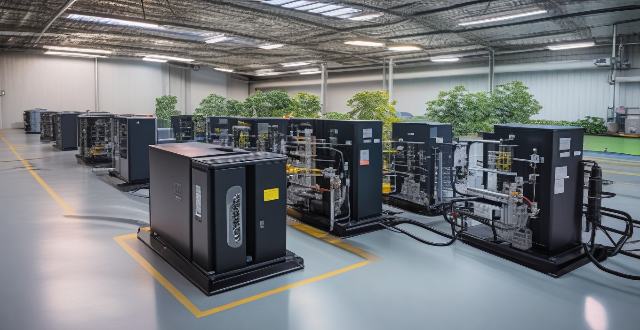
How do flow batteries compare to traditional chemical batteries ?
Flow batteries and traditional chemical batteries are both used for energy storage, but differ in aspects such as energy storage mechanism, power and energy density, lifespan and maintenance, and cost and scalability. Traditional chemical batteries store energy through chemical reactions within cells and have a fixed capacity, while flow batteries use external tanks of electrolyte solutions and have adjustable capacity. Traditional chemical batteries can deliver high power output per unit weight or volume and have moderate energy density, while flow batteries typically have lower power density but higher energy density. Traditional chemical batteries have a limited number of charge and discharge cycles before performance degrades and require regular maintenance, while flow batteries can undergo a larger number of cycles without significant degradation and require less maintenance. Traditional chemical batteries often have higher upfront costs and limited scalability, while flow batteries generally have lower upfront costs and offer more flexibility in scaling up. The choice between the two depends on the specific requirements of the energy storage application.

What factors affect the performance of a lithium battery ?
The performance of a lithium battery can be affected by temperature, charging rate, discharging rate, depth of discharge, age, and manufacturing quality. High temperatures and fast charging can damage the battery and reduce its lifespan, while low temperatures and slow charging can prolong the battery's lifespan but may not provide enough power for high-demand devices. High discharging rates can cause the battery to heat up and decrease in performance, while low discharging rates can prolong the battery's lifespan but may not provide enough power for high-demand devices. High DoD can lead to increased stress on the battery and a shorter lifespan, while low DoD can help prolong the battery's lifespan but may not be practical for devices that require a lot of power. Older batteries will have decreased capacity and performance, while newer batteries will have better performance and capacity. High-quality manufacturing processes can result in better performing batteries with longer lifespans, while low-quality manufacturing processes can result in poor performing batteries with shorter lifespans.
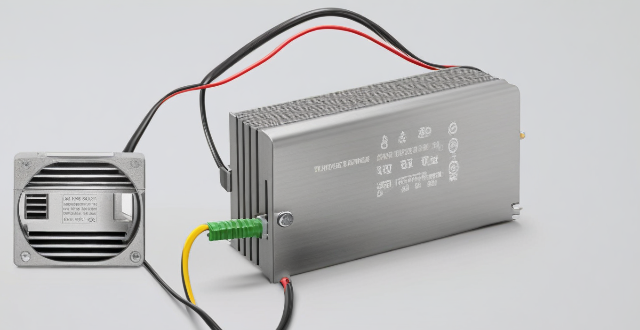
What are the benefits of using lithium batteries ?
Lithium batteries offer numerous benefits, including highLithium batteries offer numerous benefits, including highspan, low maintenance, safety They are ideal for portable electronics, electric vehicles, backup power systems, and more.

How does the research on graphene affect battery performance and lifespan ?
Graphene research has a significant impact on battery performance and lifespan by improving electrical conductivity, mechanical strength, and thermal conductivity. Increased charge carrier mobility and enhanced electrode performance lead to better power output and faster charging times. Improved cyclability and reduced shrinkage/expansion contribute to longer battery lifespan. Effective heat dissipation and enhanced safety are also benefits of graphene's high thermal conductivity. Overall, graphene is a promising material for advancing battery technology.

How can you maintain a lead-acid battery to extend its lifespan ?
Lead-acid batteries are commonly used in vehicles, UPS, and solar storage systems. To ensure their longevity, it's essential to maintain them properly. Here's how you can extend the lifespan of your lead-acid battery: prevent overcharging, avoid deep discharges, maintain proper fluid levels, keep the battery clean, and store properly when not in use. By following these maintenance tips, you can significantly extend the lifespan of your lead-acid battery and ensure reliable performance for years to come.

What factors affect the performance and lifespan of a power battery ?
The performance and lifespan of a power battery are influenced by various factors, including charging habits, discharge rates, temperature conditions, mechanical stress, age, quality of the Battery Management System (BMS), and chemical composition. Overcharging or undercharging can lead to reduced lifespan due to heat buildup or memory effect, respectively. High discharge rates and deep depths of discharge can stress the battery and shorten its longevity. Temperature extremes and fluctuations affect efficiency and stability, while mechanical impacts and vibrations can cause physical damage. Aging is an inevitable factor, but a well-designed BMS can mitigate many issues related to charge and temperature control. Different chemical compositions also play a role in stability and lifespan characteristics. Proper care and management are essential for optimizing battery performance and extending its lifespan.

How long do the batteries in a Series Hybrid Electric Vehicle last ?
The lifespan of batteries in SHEVs is influenced by factors like battery type, driving habits, climate conditions, and maintenance practices. Lithium-ion batteries are commonly used due to their high energy density and longevity, lasting typically 8 to 15 years under normal operating conditions. Driving habits such as frequent short trips or aggressive acceleration can reduce battery lifespan. Climate conditions, especially extreme temperatures, also impact battery health. Proper maintenance practices, including regular monitoring and avoiding overcharging, can prolong battery life. Estimating battery longevity involves consulting manufacturer data, monitoring battery health, adjusting driving habits, optimizing climate control, and scheduling regular check-ups. Adhering to best practices can significantly contribute to maximizing the lifespan of SHEV batteries.

What are the advantages and disadvantages of using sodium-ion batteries ?
Sodium-ion batteries have several advantages over lithium-ion batteries, including lower cost, wide availability, and improved safety. However, they also have some drawbacks such as lower energy density, shorter lifespan, and limited research and development. Despite these disadvantages, sodium-ion batteries still have potential for certain applications where cost and safety are important factors.
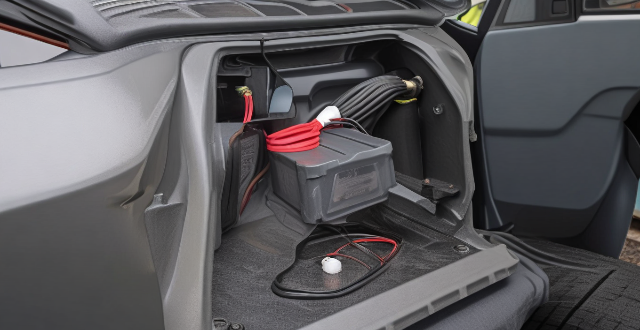
How often do you need to replace the batteries in a hybrid car ?
Replacing the batteries in a hybrid car is not a frequent task, and its lifespan can vary between 100,000 to 150,000 miles or even more. The lifespan of the battery pack can be affected by driving habits, climate, and maintenance. Signs of a failing battery pack include reduced fuel efficiency, decreased performance, dashboard warning lights, and unusual noises or vibrations. If you need to replace the batteries in your hybrid car, consult a certified mechanic, choose the right battery pack, have it installed professionally, and take your hybrid car for a test drive to ensure proper functioning.
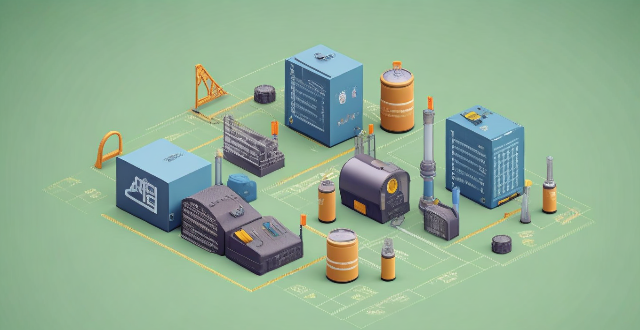
How do lithium batteries work ?
Lithium batteries work by using the chemical reaction between lithium ions and other materials to generate electricity. They consist of a cathode, anode, electrolyte, and separator. During charging, electrons flow from the cathode to the anode through an external circuit, causing lithium ions to move towards the anode and be stored there. During discharge, lithium ions move back to the cathode, releasing electrons in the process that provide power to a device. Lithium batteries have a high energy density, long lifespan, low self-discharge rate, and are used in various applications.

What are some common applications for lithium batteries ?
Lithium batteries are widely used in various applications due to their high energy density, long lifespan, and lightweight nature. They power portable electronics like smartphones, laptops, and gaming devices; electric vehicles including cars, motorcycles, and bicycles; energy storage systems for solar power and backup supplies; medical devices such as pacemakers and monitors; aerospace and defense technologies like satellites and drones; tools and devices including power tools and wireless communications; wearable technology like smartwatches and AR/VR headsets; and outdoor and recreational equipment such as camping gear and flashlights. These batteries have transformed how we use our gadgets and vehicles, making them more efficient, lighter, and longer-lasting.
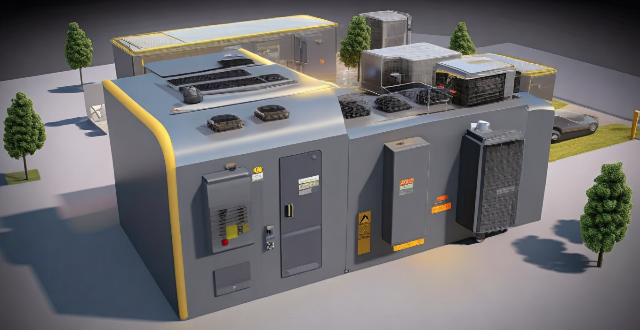
How do thermal energy storage systems compare to electrochemical batteries ?
This text compares thermal energy storage systems and electrochemical batteries in terms of their working principles, applications, advantages, and disadvantages. Thermal storage systems store energy by heating a medium and can be used for space heating, cooling, or generating electricity through a heat engine. Electrochemical batteries store energy through chemical reactions and are commonly used in portable electronics, electric vehicles, and grid support. Both systems have unique strengths and weaknesses, making them suitable for different scenarios.

Are there any specific safety precautions to follow when using zinc-carbon batteries ?
Zinc-carbon batteries, widely used in various applications, require certain safety precautions to prevent damage and injury. These include avoiding short circuiting, proper storage in cool, dry places, keeping them away from children and pets, disposing of them properly, using appropriate battery holders, inspecting regularly for damage, following manufacturer's instructions, not mixing different battery types, replacing all at once if needed, handling with care, and consulting professionals if unsure. By adhering to these guidelines, one can ensure the safe and efficient use of zinc-carbon batteries.

Can power batteries be recycled or reused after they are no longer suitable for use in electric vehicles ?
Recycling and reusing power batteries from electric vehicles is crucial for environmental protection, resource conservation, and economic benefits. The recycling process involves collection, sorting, dismantling, reprocessing, and refining of used batteries to extract valuable materials. However, challenges such as technical difficulties and economic viability must be addressed. Reusing power batteries extends their lifespan, reduces costs, and opens up innovative applications like energy storage systems or mobile charging stations. Assessment, modification, integration, and monitoring are key steps in reusing power batteries. Despite challenges like compatibility issues and safety concerns, there are opportunities for innovation in both recycling and reusing processes.

What are the differences between zinc-carbon and alkaline batteries ?
Zinc-carbon and alkaline batteries differ in terms of chemical composition, energy density, discharge rate, leakage risk, and cost. Zinc-carbon batteries have a lower energy density and discharge rate but are cheaper and have a lower risk of leakage. Alkaline batteries offer higher energy density, discharge rate, and better performance for high-drain devices but are more expensive and have a higher risk of leakage. The choice between the two depends on the specific needs of the device and budget constraints.
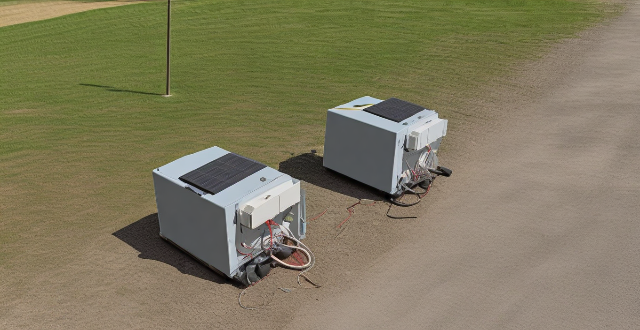
What challenges need to be overcome for widespread adoption of metal-air batteries ?
Metal-air batteries have gained significant attention due to their high energy density, low cost, and environmental friendliness. However, there are several challenges that need to be overcome for widespread adoption of these batteries. The major obstacles include anode material corrosion, catalyst degradation, oxygen supply, heat management, and safety concerns. To address these issues, researchers are exploring alternative materials, protective coatings, nanostructured catalysts, solid oxide electrolytes, cooling techniques, and safety protocols. Potential solutions also involve developing new materials and structures for anodes, catalysts, and electrolytes, investigating innovative designs for oxygen storage and supply systems, implementing advanced cooling techniques and safety protocols, and collaborating with industry partners to commercialize promising technologies. By addressing these challenges and leveraging emerging technologies, metal-air batteries have the potential to revolutionize energy storage and power generation in various applications.
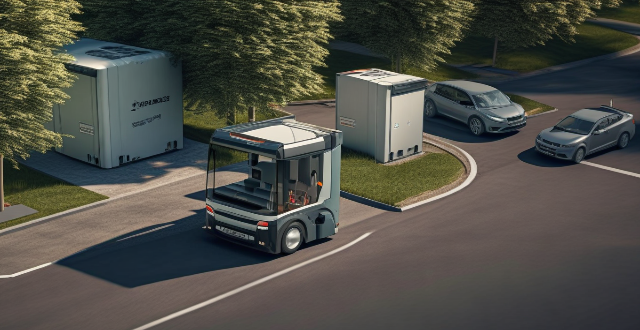
Are there any safety concerns associated with power batteries in electric vehicles ?
Electric vehicles (EVs) are becoming increasingly popular as an alternative to traditional gasoline-powered cars. One of the main components of an EV is its power battery, which stores energy and provides it to the electric motor. While power batteries have many benefits, there are also some safety concerns associated with them. In this article, we will discuss these concerns and how they can be addressed. The most significant safety concern associated with power batteries is thermal runaway. This occurs when a battery cell overheats and causes a chain reaction that can lead to fire or explosion. Thermal runaway can be caused by various factors, including manufacturing defects, physical damage, or improper charging. Another safety concern associated with power batteries is chemical leaks. Lithium-ion batteries, which are commonly used in EVs, contain chemicals that can be harmful if they leak out of the battery pack. Finally, there is a risk of fire associated with power batteries in EVs. While fires are rare, they can occur due to thermal runaway or other factors, such as physical damage to the battery pack.
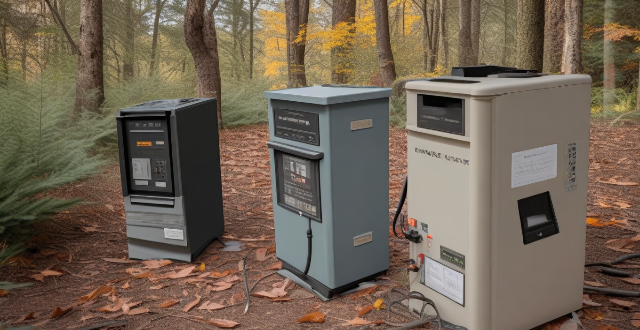
Are zinc-carbon batteries safe to use ?
Zinc-carbon batteries are a common type of battery used in many household devices, such as flashlights, remote controls, and toys. While they are generally safe to use, there are some precautions that should be taken to ensure their proper handling and disposal. These include avoiding short circuits by keeping the terminals from touching each other or any metal objects, storing them in a cool, dry place away from extreme temperatures and out of reach of children and pets, and disposing of them properly at a recycling center or store that accepts used batteries. Despite these precautions, zinc-carbon batteries offer several benefits, including being cost-effective, widely available, and having a long shelf life.

What is the difference between a sealed and unsealed lead-acid battery ?
Sealed lead-acid batteries are maintenance-free and have a longer lifespan than unsealed batteries. They also have a lower self-discharge rate and no risk of acid spillage. Unsealed lead-acid batteries require regular maintenance, including checking the electrolyte level and adding distilled water when necessary. They generally have a shorter lifespan and a higher self-discharge rate compared to sealed batteries. There is also a risk of acid spillage if the battery is damaged or mishandled.

Can lithium batteries be recharged ?
Lithium batteries can be recharged, and the process involves the movement of lithium ions between the positive and negative electrodes. Proper charging practices ensure their longevity and safety.

How can I maximize the lifespan of my electric vehicle's power battery ?
Maximizing the Lifespan of Your Electric Vehicle's Power Battery: Electric vehicles (EVs) are becoming increasingly popular due to their eco-friendliness and cost-effectiveness in the long run. However, one of the most crucial components of an EV is its power battery, which requires proper maintenance to ensure a longer lifespan. Here are some tips on how you can maximize the lifespan of your electric vehicle's power battery: 1. Avoid extreme temperatures: The performance and lifespan of your EV's power battery can be significantly affected by extreme temperatures. Both high and low temperatures can cause damage to the battery cells, leading to reduced capacity and shorter lifespan. Therefore, it is essential to store and operate your EV within moderate temperature ranges whenever possible. 2. Maintain proper charging habits: Proper charging habits play a crucial role in maximizing the lifespan of your EV's power battery. It is recommended to maintain a moderate state of charge (SOC) and avoid frequent deep discharges and full charges. 3. Regular maintenance: Regular maintenance is essential for ensuring the longevity of your EV's power battery. This includes monitoring the battery's health, checking for any signs of damage or leakage, and addressing issues promptly. 4. Drive efficiently: Driving efficiently can also help maximize the lifespan of your EV's power battery by reducing strain on the battery and improving overall energy efficiency.

How long does a typical power battery last in an electric vehicle ?
Electric vehicles (EVs) have become increasingly popular due to their environmental benefits and lower operating costs. One of the most common concerns for potential EV owners is the lifespan of the vehicle's power battery. In this article, we will explore the typical lifespan of a power battery in an electric vehicle and factors that can affect it. The lifespan of a power battery in an electric vehicle depends on several factors, including the type of battery, driving habits, and maintenance practices. However, a general rule of thumb is that a typical power battery lasts between 8-15 years or 100,000-200,000 miles. Several factors can impact the lifespan of a power battery in an electric vehicle. These include: - Type of Battery: The two most common types of batteries used in EVs are lithium-ion and nickel-metal hydride. Lithium-ion batteries generally have a longer lifespan than nickel-metal hydride batteries. - Driving Habits: Frequent rapid acceleration and braking can shorten the lifespan of a power battery. Additionally, driving at high speeds and in hot temperatures can also negatively impact battery life. - Maintenance Practices: Proper maintenance practices, such as regularly checking and maintaining the cooling system, can help extend the lifespan of a power battery. Neglecting maintenance can lead to premature battery failure. - Charging Habits: Charging the battery to 100% every time can shorten its lifespan. It is recommended to charge the battery to around 80% to prolong its lifespan. As a power battery ages, it may start showing signs of failure. Some common signs include: - Reduced Range: If you notice a significant decrease in the distance your EV can travel on a single charge, it could be a sign that your power battery is failing. - Slow Charging: If your EV takes longer to charge than usual, it could be a sign that your power battery is losing capacity. - Decreased Performance: If you notice a decline in your EV's overall performance, such as slower acceleration or reduced top speed, it could be due to a failing power battery. - Bulging or Swelling: If you notice any physical changes to your power battery, such as bulging or swelling, it is a clear sign that it needs to be replaced. In conclusion, the typical lifespan of a power battery in an electric vehicle is between 8-15 years or 100,000-200,000 miles. However, several factors can impact the lifespan of a power battery, including the type of battery, driving habits, maintenance practices, and charging habits. By being mindful of these factors and properly maintaining your EV's power battery, you can help extend its lifespan and enjoy many years of reliable performance.